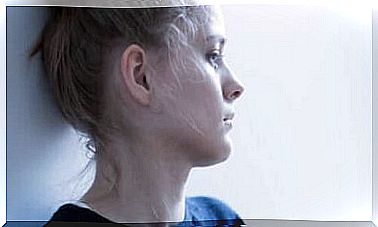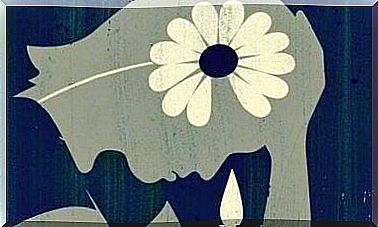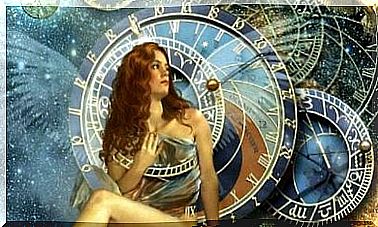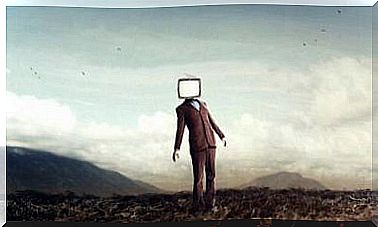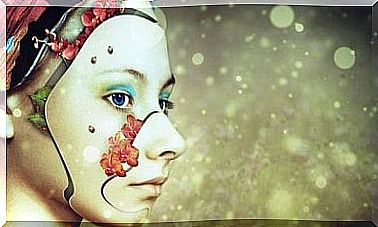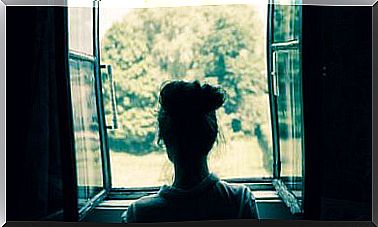What Is Special About Depressed People’s Dreams?
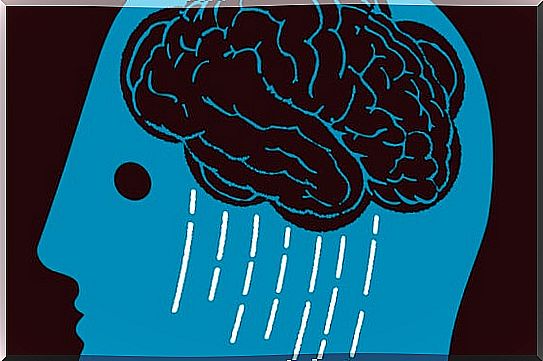
People with depression tend to experience various forms of sleep disorders. But here is a strange fact that research has shown. Depressed people’s dreams last up to three times longer than people without depression.
While depression often causes discomfort and fatigue, the dreams of people with depression have a very specific goal: to regulate their emotional world.
This is definitely a new topic and something that many of us do not know much about. When we talk about depression, it is common to focus on a few specific things.
These are usually symptoms, triggers or various treatments . But we rarely look at the topic of depressed people’s dreams.
That is, gaining a better understanding of what happens in the brain of a person with depression when they finally manage to fall asleep.
“The interpretation of dreams is the noble path to an understanding of the unconscious mind.”
–Sigmund Freud–
We agree with Freud’s statement about how dreams are the noble path to the unconscious mind. This path can actually be a windy road that never takes us anywhere. But it will definitely provide a spectacular view of what is really going on in our minds.
Dreams are a sign of a problem. They are like an abstract Kandinsky painting. They are trying to tell us something, to give shape to what hurts, scares or threatens us.
Depressed people’s dreams are a defense mechanism that the brain uses to try to regulate the underlying emotion.
The REM phase in people with depression
Doctor, Rosalind D. Cartwright, is a famous psychologist at the University of Cornell. She has dedicated much of her life to researching and understanding the world of dreams.
In her well-known book, “The Twenty-Four Hour Mind,” she delves into the interesting relationship between our emotions and our dreams.
It really is an amazing effort of years of research where one thought really stands out . The brain makes an effort to help us deal with negative emotions – through dreams.
The way it does it is as fascinating as it is strange. Why? Because the person does not actually feel how dreaming helps them. But it tries to help through a variety of mechanisms. Let’s look at them…
The REM phase and depressed people’s dreams
- For example, depressed people may be tired during the day and have difficulty falling asleep at night.
- When they wake up, they tend to feel tired. This is because they did not get proper, restorative sleep. On the contrary. They feel that their head is even “fuller”. They know they dreamed a lot, but they can never quite remember what those dreams were about.
- What actually happens is that depressed people enter the REM phase much earlier. And this phase, where dreams come true, usually lasts 3 times longer. That is, people with depression dream three times as much as people without it.
- We must also keep in mind that we call REM sleep “paradoxical sleep” because it does not provide any rest. In fact, it is the period when we produce the most adrenaline.
- Thanks to new studies on imaging and diagnostic tests, we have also been able to see something about the limbic system . It is a system that is related to our emotions and it is more active than ever during the REM phase. This only happens with depressed people.

Dr. Cartwright explains that when we sleep, our brain takes control. The most important aspect of this time, even more than getting restorative physical rest, is to “push ourselves” to work out our emotional knots.
Sometimes it does so in the worst possible way. It uses nightmares and unpleasant dreams, which also happens in the dreams of depressed people.
Everything that creates confusion, anxiety or desperation in us comes out in this surreal, strange world . It is our brain that tries to regulate the negative emotion and tries to “detoxify” such mixed tension.
“The person who looks outside dreams; The person looking inward wakes up. ”
-C Jung
Rest patterns in people with depression
We are aware that “dreaming” three times as much, having nightmares and opening your eyes to a new day with a feeling of tiredness, is not very useful when it comes to overcoming depression.
If this information helps us with anything, it should be to know our enemy better. And we should really understand that our brain is informing us that there is something we need to fix.
So knowing this, it is always a good idea to apply sleep strategies. They are helpful in improving sleep in people with depression.
They can also help us if we happen to be going through a similar stage. This is true whether it is a minor depression, dysthymia or a major depression.
- We should avoid intensifying our emotional strain before going to bed. Brewing thoughts will undoubtedly make our mood worse. This will make the REM phase last longer and erase our hopes of a good night’s sleep.
- Exercises such as meditation or other relaxation techniques will be helpful. They help us go to bed with a less active brain.
- Also, if we are taking anti-depressants, it will be good for us to find out what side effects they may have for our sleep, and consider switching medications if the effects are severe.
- And we need to adjust our circadian rhythms. We should try to follow a coherent schedule where we go to bed and get up at the same time every day.

As we move forward in our treatment plan, our REM sleep adjusts itself. It will last less time and allow us to rest better. At the same time, our dream world will cease to be so agitated, mysterious, or even frightening.
Our brain will stop prioritizing our emotions so it can perform its normal nocturnal habits. At night, it usually classifies as important information, organizes experiences and sends away useless information.
Our inner world will come into balance again. Nightmares and the shadow of depression will fade away…

